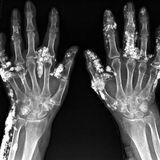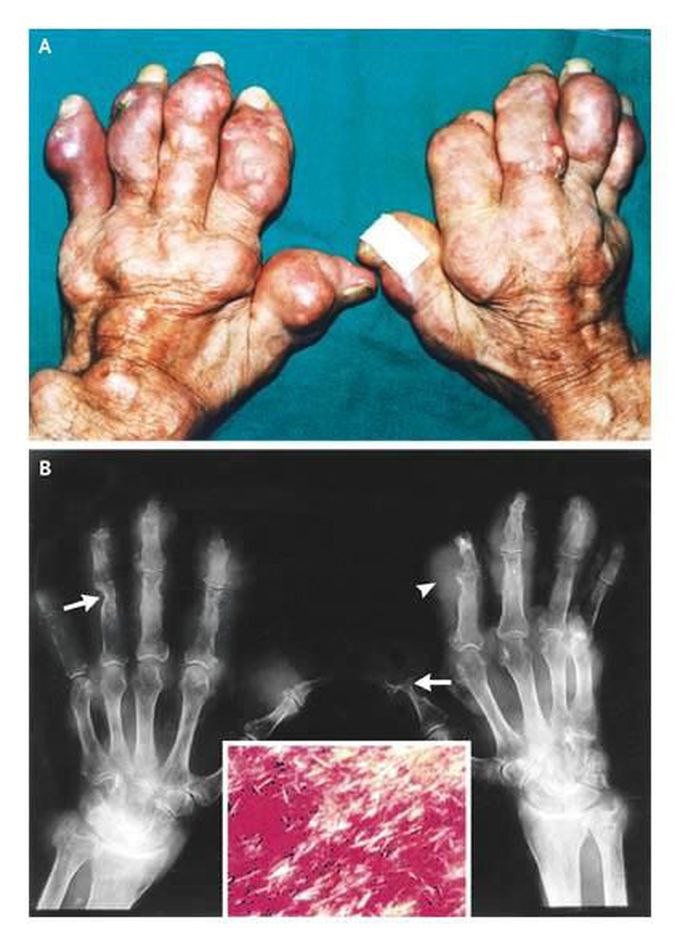


Deforming Gout
An 80-year-old man with a 30-year history of gout was referred to the rheumatology clinic for further treatment. He had received colchicine and urate-lowering drugs intermittently over the previous several years. Clinical examination revealed multiple tophi on the hands (Panel A), feet, knees, and auricular surfaces. Some of the tophi exuded a white, chalky material. Laboratory studies were notable for a serum uric acid level of 8.5 mg per deciliter (506 μmol per liter), urinary urate excretion of 350 mg per day (2 mmol per day), and a creatinine clearance rate of 39 ml per minute per 1.73 m2 of body-surface area. A radiographic evaluation (Panel B) demonstrated soft-tissue swellings (arrowhead) and para-articular erosions and overhanging margins (arrows) involving the wrist, metacarpophalangeal joints, ulna, proximal and distal interphalangeal joints, and metatarsophalangeal joints. Polarized light microscopy (inset) showed a myriad of extracellular urate crystals. The patient was treated with nonsteroidal antiinflammatory drugs, low-dose colchicine, and allopurinol. He improved over the following year. Gonzalo Pacheco, M.D. Javier A. Cavallasca, M.D. Hospital de Clínicas José de San Martín, Buenos Aires, Argentina source: nejm.org

